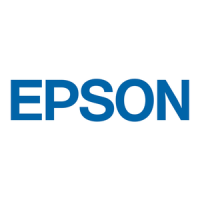
Do you have a question about the Epson TM-C7500G series and is the answer not in the manual?
| Print Technology | Inkjet |
|---|---|
| Ink Type | Pigment-based ink |
| Connectivity | USB, Ethernet |
| Operating Systems Supported | Windows, macOS |
| Media Handling | Roll-fed |
| Ink Cartridge | Individual CMYK cartridges |
| Cutter | Auto cutter |
| Print Speed | Up to 11.8 inches/sec (300 mm/sec) at 360 x 360 dpi |
Details the key features and specifications of the printer model.
Describes the printing capabilities, including speed and color options.
Explains how users can interact with and control the printer's functions.
Explains the symbols used in the manual and their importance levels.
Provides critical safety warnings and guidelines for installing the product.
States the manual's purpose: to provide information for developers.
Identifies and describes the components located on the front of the printer.
Explains the function of each button and LED on the printer's control panel.
Identifies and describes the connectors and vents on the rear of the printer.
Details how to enable or disable the auto nozzle check feature.
Details how to check the status of ink cartridges and the maintenance box via the LCD.
Describes the printer's beeper functions for notifications and errors.
Guides the user through the software-based installation process using Install Navi.
Provides a manual step-by-step guide for setting up the printer without software.
Provides essential safety precautions and steps for physically installing the printer unit.
Specifies the ideal environmental conditions and placement requirements for the printer.
Details the steps required to attach the optional rewinder to the printer.
Explains how to properly feed the paper's leading edge onto the rewinder.
Provides a detailed guide for loading roll paper into the printer.
Details the procedure for loading fanfold paper into the printer.
Explains the steps to remove paper from the printer, for replacement or clearing jams.
Guides users on how to select the display language for the printer's LCD.
Details the steps for configuring the printer's network settings, including IP address.
Describes how to configure paper settings through the printer driver interface.
Explains how to configure paper settings using the dedicated PrinterSetting utility.
Details how to configure paper settings directly using the printer's control panel switches.
Provides instructions on how to access and open the printer driver settings window.
Provides a comprehensive list of configurable settings and their availability via different methods.
Details the available settings and their default values when configured via the panel switch.
Guides the user on how to launch and initiate the PrinterSetting utility.
Explains how to configure the printer's media source, detection, and type.
Describes how to set the media layout or create custom user-defined layouts.
Details how to adjust the print start position and cut position for optimal alignment.
Explains how to configure panel buttons and LCD display settings.
Details settings related to auto nozzle checks, thresholds, and intervals.
Covers advanced printer configurations like paper feed adjustment and sensor calibration.
Introduces the Favorite Setting feature for managing and applying custom print settings.
Explains how to export and import printer driver configurations for backup or deployment.
Details how to configure various barcode types and their properties in the printer driver.
Explains how to configure different 2D symbol types and their parameters.
Explains how to enable or disable the EPSON Status Monitor 3 for printer status monitoring.
Provides instructions on how to uninstall the USB Printer Class Device Replacement Service.
Guides on cleaning the autocutter to remove adhesive and maintain performance.
Provides instructions for properly storing the printer for extended periods.
Guides on the steps to take when restarting the printer after it has been stored for a long time.
Details common error messages and their corresponding recovery methods.
Explains warning messages related to low ink, maintenance box, and nozzle clogging.
Addresses issues and recovery methods related to the printer driver and its status.
Describes common causes and solutions for poor print quality, such as dot dropouts and media settings.
Outlines different methods for controlling the printer from applications.
Describes the SDK provided for developing custom applications that use the printer driver.
Details how to manage printer settings when replacing or reconfiguring the unit.
Guides on using USBInformationSetting to manage USB IDs during printer replacement.
Lists the software utilities provided for application development.
Lists the available manuals and their providing methods.
Provides detailed technical specifications for the printer.
Lists the system requirements for the computer and operating systems to use the printer.
Details print speed, printable area, and head maintenance modes.
Lists the types, categories, forms, and widths of paper supported by the printer.
Illustrates the printable and cutting areas for full-page black mark labels with and without extendable area.
Illustrates the print and cut areas for die-cut labels with gaps on roll paper.
Illustrates the print and cut areas for die-cut black mark labels on roll paper.
Illustrates the print and cut areas for die-cut black mark labels on fanfold paper.
Details the model numbers, ink type, life, and storage conditions for ink cartridges.
Details the model number, type, and temperature specifications for the maintenance box.
Provides specifications for the optional rewinder device.
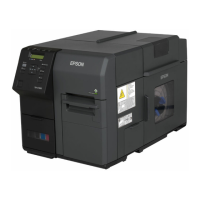
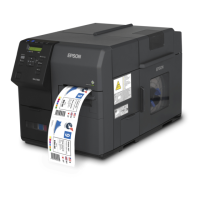

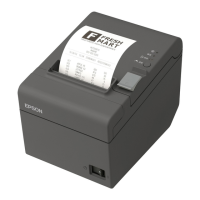
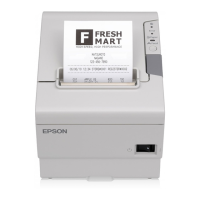
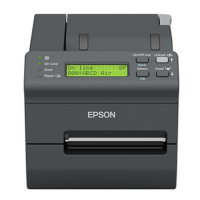
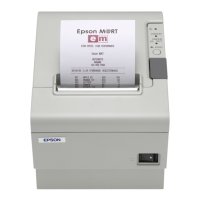
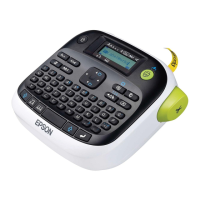



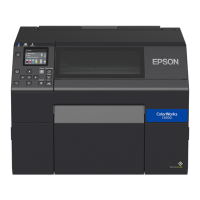
